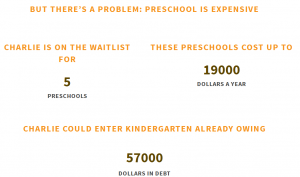Who Do You Call For an Underperforming or Brand New Website?
Graphic Designers? Programmers? Copywriters?
I recently participated in a non-profit free-for-all where tech people donate their talents to a variety of local non-profits. It was a great experience and I got to work with several organizations.
It was also a great opportunity to see how designers and programmers approach web design. I’d been warned about this from copywriting experts like Nick Usborne and Pam Foster, but this was the first time I got to see it in person.
Wait a second. Warned?
Yes. I witnessed firsthand three major problems with letting graphic designers and code-writers have too much control over the development of a website. Now, some designers and programmers do get it, such as Ben Hunt. His evaluation of website usability is spot-on.
But the more common approach to websites is what I saw that weekend. Here are three approaches to website development that graphic designers take that will harm your website’s effectiveness at reaching and converting your customers.
1. Following web design “trends” instead of questioning them
It may be a cliché, but just because everyone is doing something doesn’t mean it’s a good idea. Web designers will say, “This is how websites are trending,”  when they explain why we should do it a certain way.
when they explain why we should do it a certain way.
But, do we ever question the efficacy of trends? Do we evaluate if they really work better?
In one case, a preschool site, you can see how the text is so spread out between very large photos that you can’t actually read the content such that the story builds on itself. It comes across as a series of independent statements. I have to remember what the last one said, because I can’t see it on the screen.
But, because we must continue bowing to the mobile technology gods, web design is “trending” in this direction, or so I was told.
Except that it doesn’t work. If I wanted to enroll my kid in a preschool, and wanted to read and think about the merits of a program, I want to be able to see what the program offers. With this format, I can’t see the whole story on one screen. This frustrates the user.
Many designers don’t see it this way. And I predict that a lot of websites are going to start seeing conversion rates dip after redesigning their sites following these trends. They’ll wonder why, because it’s so “cool,” and seems like it should be engaging. Except that it isn’t. And this leads to the second harmful approach to website development:
2. Focusing on layout more than clarity
Layout and web design must be in submission to the user experience. And user experience isn’t just about active links and easy navigation. Those are important too. But the overlooked piece here is clarity and why users will click on your calls-to-action.
Again, viewing the Tiny Trees site – which has a great idea and a real Unique Sales Proposition – the thrust of the story is lost amid the huge photos and the sliding graphics. One scroll down, and I lose sight of the text I was reading. I have to keep scrolling back and forth to connect thoughts.
No matter how good the copy is, its message gets muddled amid all the sliding around. And yet, the bulk of the time we spent was devoted to making all these sliding features work.
Almost no time was spent on how to actually draw traffic to the site, using effective SEO copywriting and content. And this is not to criticize the designers. They did great work. This site went from non-existent to up-and-functioning in just two days. This is a great accomplishment.
But had we given a little more priority to the clarity of content and message from a user’s standpoint, it would have been even better. But what happened most of the time? The third harmful approach to website development:
3. Calling in the copywriter when we need to “edit” text.
At one point, I was summoned because they needed some “copy” to be revised. It was a simple editing task to make a phrase work better. And this is when I realized my “place” in their minds.
To many designers, copy is just text. It’s the words we throw in after web design is completed, right before the site is up and running.
They do not realize how small differences will impact the user. Here are two examples from the site that I was able to influence.
Example 1: Editing or persuading? Check out this graphic:
Notice the last statement. Originally, they had written, “If Charlie took loans, she would enter kindergarten with,” followed by the graphic of 57,000. I suggested the version that appears now.
Is this just editing? No. The original gives the reader an ‘out.’ Some readers will take the conditional statement of “If Charlie took loans” and say to themselves that they won’t need loans, so this doesn’t apply to them.
With my version, it simply states the fact that Charlie could enter kindergarten owing all this money.
These are the subtle differences that nudge readers to make choices that favor your business.
Example 2: The Subscription Page Opt-In
The Subscription Page is the only content on this site I wrote. But I also convinced them to put more than just an email field with a “Subscribe” request on all their pages, which is what almost every non-profit website does. My version looks like this:
Just adding the simple phrase, “Be the first to enroll” gives an incentive to sign up and a potential benefit for doing so. But for the visitors who are still unsure, the last sentence gives a hint about the other updates you’ll receive. This links to a Subscription Page which gives more details and incentives for signing up for the free newsletter.
These simple changes make a profound difference, because it addresses the needs of users of all levels – those who want to sign up now, and those who aren’t sure and need more information before handing over their emails.
This is not copy editing. This is making a page function for its users, and meeting the goals of the business.
And that’s why designers should never be put in charge of developing a website without a knowledgeable copywriter working alongside them.




